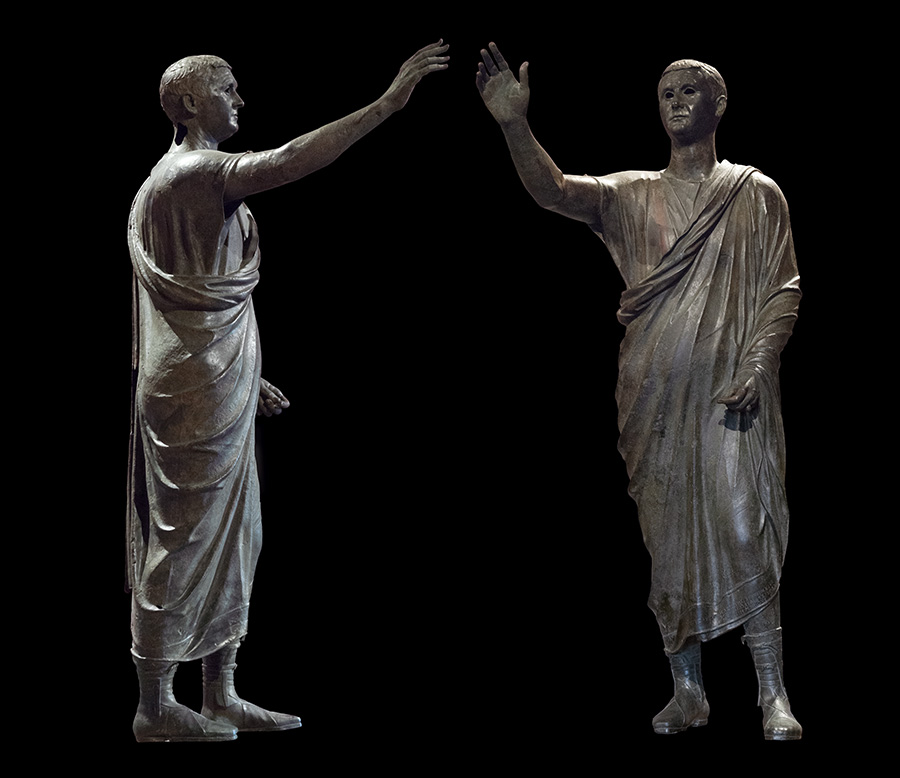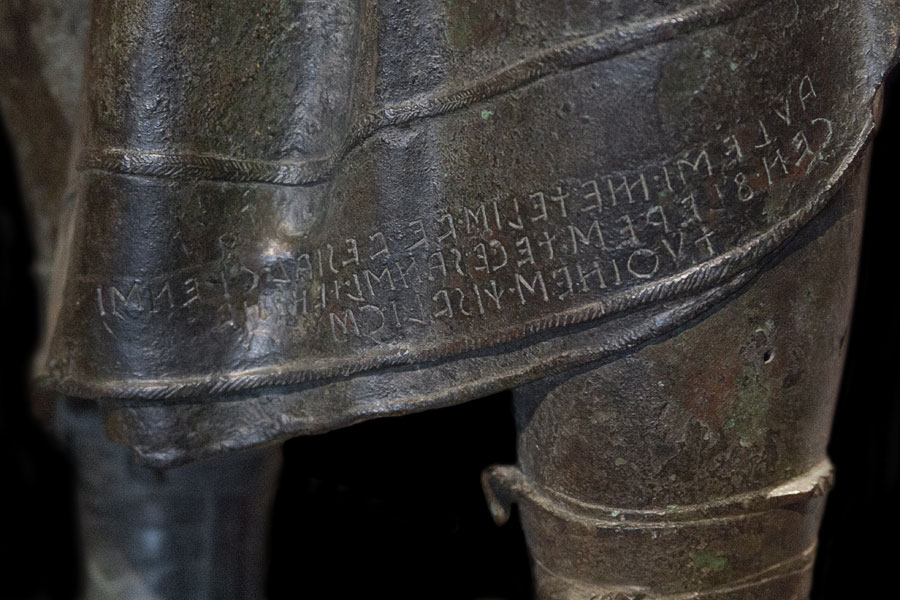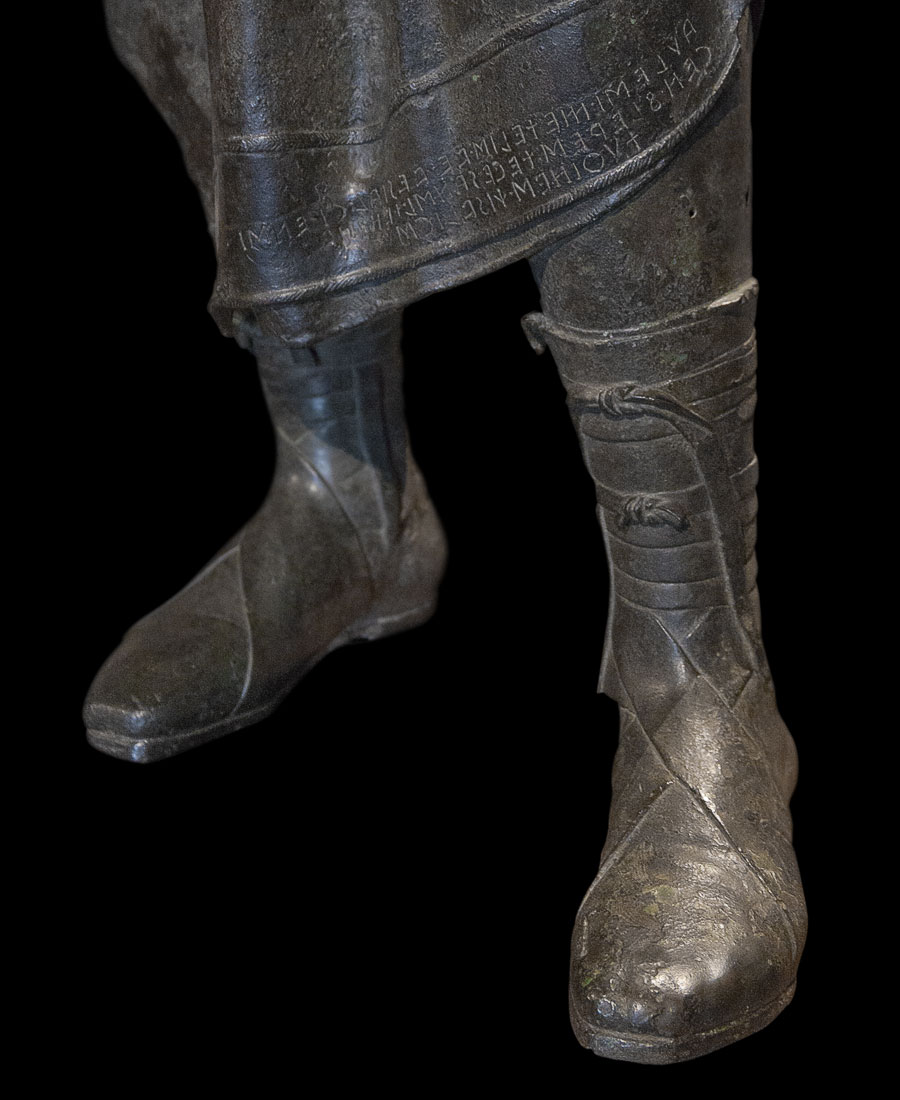
'L'Arringatore' (The Orator) Bronze statue of Aulus Metellus, from Sanguineto (Perugia), end of 2nd - early 1st century BC Florence, Museo Archeologico Nazionale
Below, a detail of the Etruscan inscription on the hem of the toga

Discovered in 1566 14 km from Perugia, immediately purchased by Cosimo l and brought to Florence, this bronze statue was cast in seven parts, using the lost wax technique, and then soldered. The casting is hollow, except for the feet, to give the figure greater stability. The sculpture represents a life-size, mature man, with his right hand raised in the act of silentium manu facere (imposing silence with the hand), the gesture with which political figures of Republican Rome took the floor to begin an oration, a public harangue (hence the name "Arringatore", haranguer). The man, with a serious face rendered with extraordinary realism, wears a short toga (exigua) with a bordered hem over a tunic lined with a narrow red band; this, together with his footwear (calcei), the type with two knots worn only by senators, and his magistrate's ring, identifies Avle Meteli as a Roman citizen of the upper class, one of the Etruscan cities' elite who were gradually beginning to enter the Roman Senate. Along the toga's lower hem runs the inscription: "To Aule Meteli, son of Vel and of one Vesi, this object sacred to the god Tece Sans is offered by the community of Chisuli". The orator Avle Meteli (in Latin Aulus Metellus) is perhaps the most striking testimony to the slow but inexorable process of the Romanization of Etruria, represented here by a perfectly Roman statue, but an inscription that is still Etruscan.
Below, a detail of the calcei (footwear)